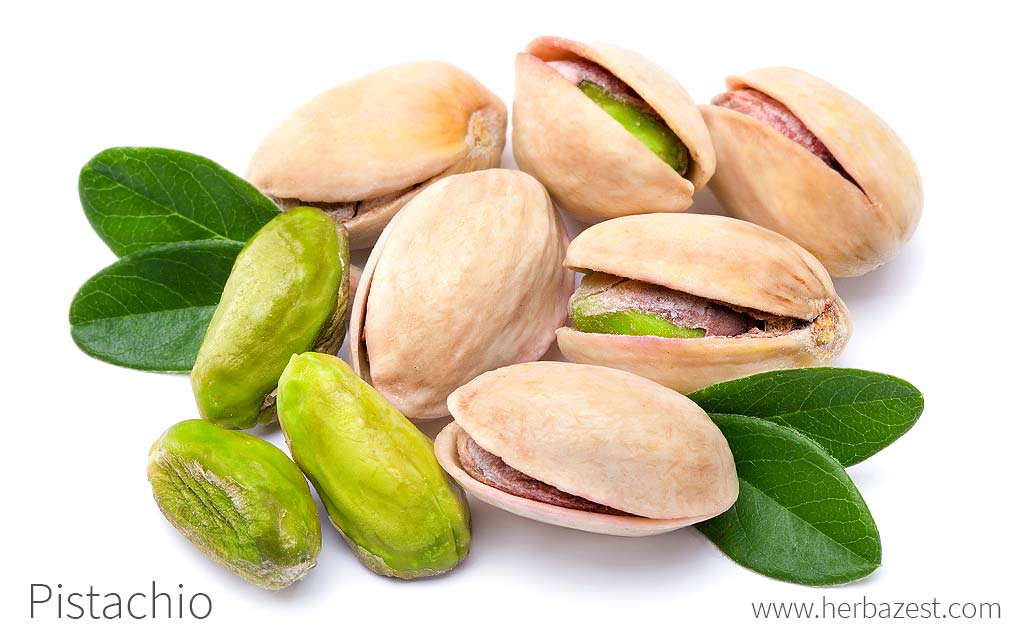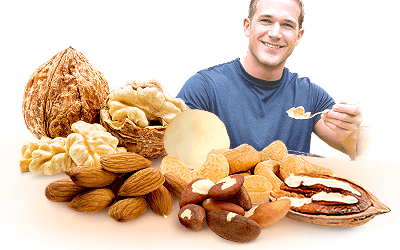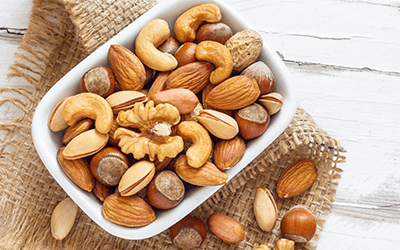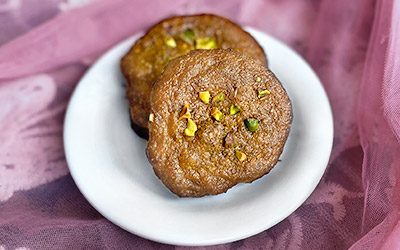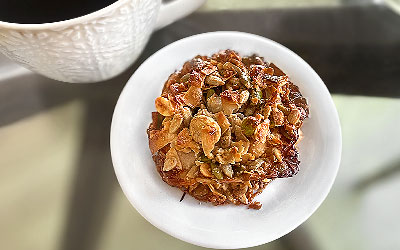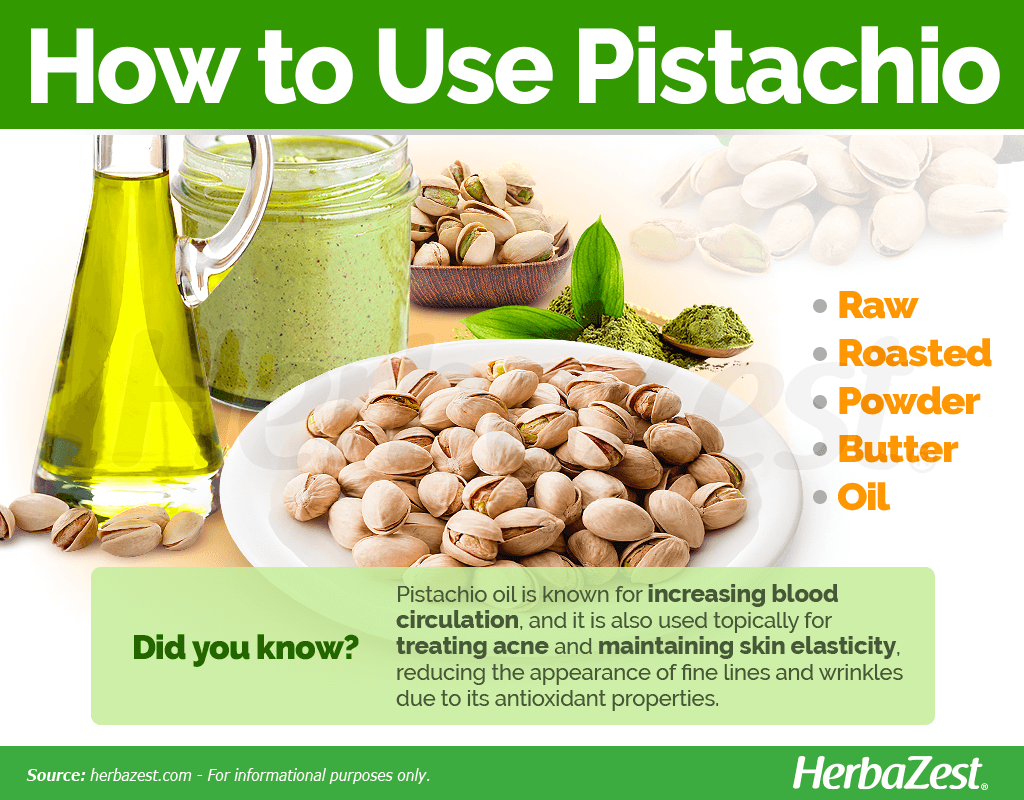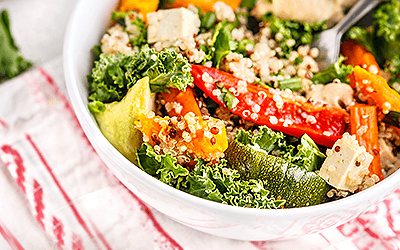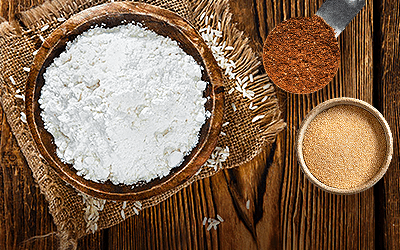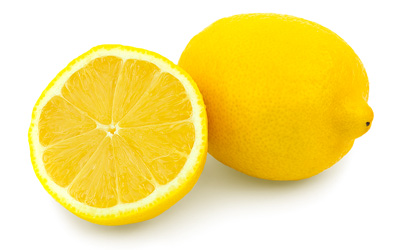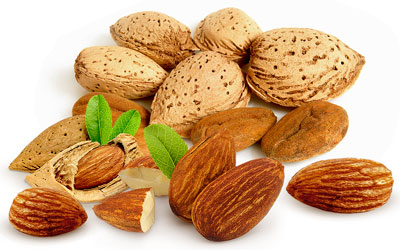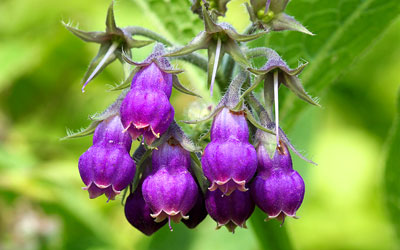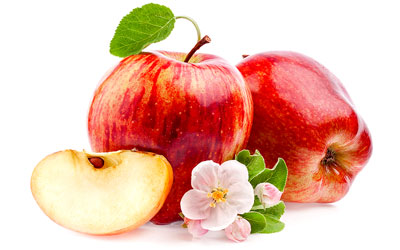Hailing from Asia and known by the Ancient Greeks as "green nuts," pistachio nuts have been consumed for over 6,000 years. They are renowned for their distinctive, aromatic flavor. Additionally, pistachios are highly nutritious, offering various health benefits that may help prevent and manage chronic diseases.
Pistachio Medicinal Properties
Health Benefits of Pistachio
Pistachios are mostly consumed for their rich flavor and the energy boost they provide; however, extensive research has been done regarding their nutritional content and bioactive compounds. A large number of studies suggest the most important benefits of pistachio nuts are:
Promoting heart health. Pistachio nuts can help keep cholesterol levels and high blood pressure under control, and their regular consumption has been linked to general improvements in cardiovascular health.
Improving metabolic function. Eating pistachios can reduce insulin resistance in people with metabolic problems, such as hyperglycemia and diabetes, aiding with sugar control.
Some research supports the benefits of pistachios for:
Improving cognitive function. Pistachios have been shown to improve memory and enhance cognition, delaying the onset of common age-related degenerative diseases like Alzheimer's disease.
Pistachios have also been shown to be helpful for weight management and for reducing inflammation.
How It Works
The most important bioactive compounds behind the medicinal properties of pistachios are phytosterols, polyphenols, and unsaturated fatty acids, all of which act synergistically to improve a variety of health parameters.
Snacking on pistachio nuts has proven highly beneficial for diabetic patients, reportedly improving metabolic parameters such as glycemic control, blood pressure, obesity, and inflammation.1 These effects are attributed to the abundance of polyphenols in pistachio seeds (e.g., genistein, daidzein, and apigenin) and skins (e.g., epicatechin, quercetin, naringenin, luteolin, kaempferol, and cyanidin). Both seeds and skins of pistachios are also rich in gallic acid, catechin, eriodictyol, naringenin, and quercetin, among other supportive compounds.
On the other hand, pistachio's phytosterols have been proven to reduce high levels of low-density lipoproteins (LDL), most commonly known as "bad cholesterol," helping prevent cardiometabolic syndrome (CMS), a dangerous health condition that combines metabolic dysregulation, cardiovascular disease (CVD), and diabetes risk factors.2
Additionally, pistachios are a rich source of unsaturated fatty acids, better known as "healthy fats," mainly oleic and linoleic acids, which represent more than half of the total fat content in pistachios and have been shown to improve mood, memory and cognitive performance.3
Recent investigations have shad light on the beneficial effects of pistachios on the gut microbiota.4
Other herbs that promote metabolic function are figs, lucuma, and oats. On the other hand, cashews, quinoa, and almonds help improve cardiovascular health.
Side Effects of Pistachio
Pistachios are considered generally safe; however, they can cause allergic reactions in people who are allergic to tree nuts. Excessive consumption can lead to digestive discomfort, and individuals with sensibility to fructans (a type of carbohydrate found in many foods) can experience bloating, flatulence, abdominal pain, diarrhea, or constipation. Eating too many pistachio nuts can also lead to nausea, weakness, slow pulse, and irregular heartbeat.
Additionally, pistachios are high in potassium, which can damage the kidneys in large amounts. This is particularly dangerous for people with kidney diseases.
Due to poor storage, excessive humidity, or pests, there's a chance of contamination by mold, aflatoxin (a toxin produced by fungus), and salmonella. The best advice is to read the labels carefully, check the dates of packaging and expiration, and prefer organic, certified brands.
- Medicinal action Cardioprotective, Nutritious
- Key constituents phytosterols, polyphenols, unsaturated fatty acids
- Ways to use Food, Powder, Essential oil, Dried
- Medicinal rating (2) Minorly useful plant
- Safety ranking Safe

Pistachio Nutrition
Pistachio nuts are a nutrient-rich snack. The daily recommended amount of 1 ounce (28.35 grams, or 49 kernels) provides essential minerals and vitamins as well as a good deal of dietary fiber and healthy fats.
Low in carbohydrates, pistachios are an excellent source of minerals, mainly copper, which is key for the transport of red blood cells and is also involved in many physiological processes, such as angiogenesis (the formation of new blood vessels), hormone regulation, brain development, pigmentation, and immune system functioning. On the other hand, pistachio nuts offer good amounts of manganese, necessary for strong bones, reproductive function, blood clothing, and immune health; and phosphorus, which supports bones and teeth as well as cellular metabolism. Other minerals that can be obtained in adequate amounts from pistachios are potassium, zinc, magnesium, and iron as well as small quantities of selenium and calcium.
Pistachio nuts also provide generous amounts of some important vitamins, mainly from the B group. These green nuts are rich in B1 (thiamin) and B6 (pyridoxine), both water-soluble nutrients. B1 is key for transforming food into energy as well as for proper growth, development, and cellular function. On the other hand, B6 plays an important role in many metabolic processes and is crucial for both brain development and immunity. Other B vitamins are present in smaller amounts, along with adequate amounts of vitamin E.
An ounce of pistachio nuts (28.35 grams or 49 kernels) provides 159 calories, 11% DV of protein, 20% DV of healthy fats, 3% DV of carbohydrates, and 12% DV of dietary fiber.
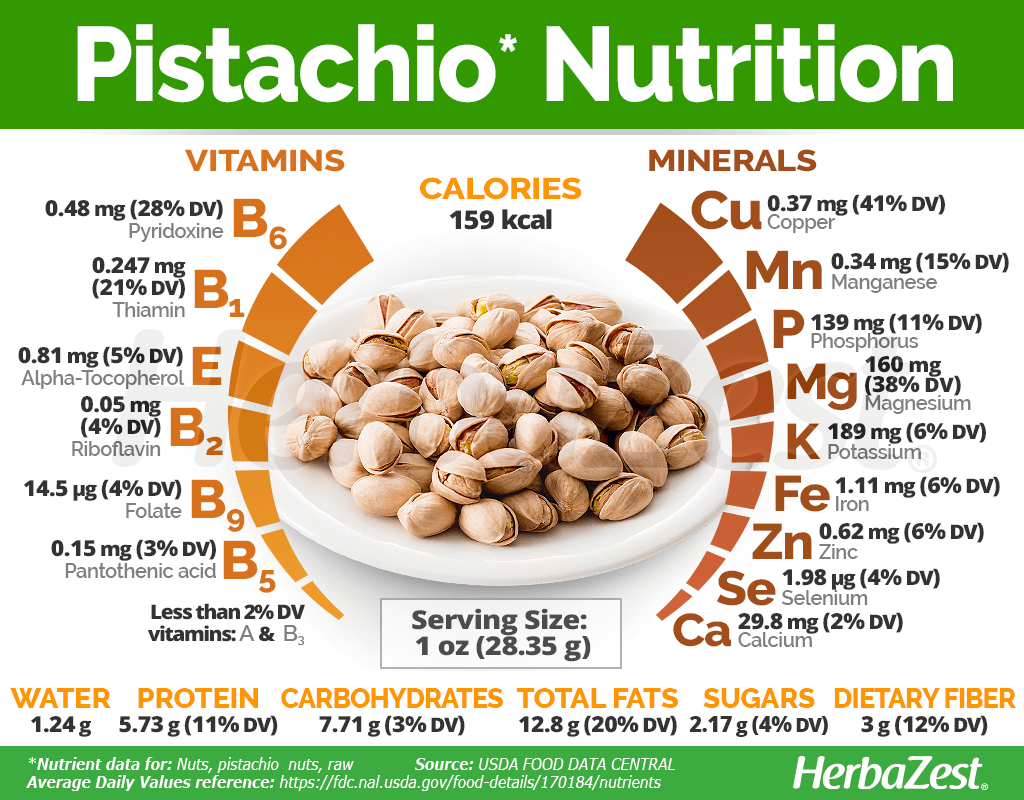
How to Consume Pistachio
Pistachios are mostly consumed in culinary forms, which are the best way to obtain their medicinal and nutritional benefits.
The best way to prevent pistachios' fatty acid oxidation is to store them in an airtight container in the refrigerator at 40°F (4°C) for up to 1 year. Otherwise, they can be kept for several months at room temperature (68°F or 20°C) in a dry environment.
Natural Forms
Raw. Raw pistachios, shelled or not, are rich in antioxidants and are best consumed with their skin to absorb all their beneficial compounds.
Roasted. Roasted pistachio nuts are widely popular and as healthy as raw pistachios, providing the same nutrients and bioactive compounds. However, they are often available as a salty snack. It is better to choose unsalted pistachios or ensure they are low in sodium.
Powder. Pistachio powder is very popular for baked recipes and healthy shakes. It can help with blood sugar regulation as well as improve digestion and heart health.
Butter. With a delicious, creamy texture, pistachio butter not only retains the characteristic flavor and color of the green nuts but also their rich nutritional content and antioxidant compounds.
Herbal Remedies & Supplements
Oil. Obtained from cold-pressed nuts, pistachio oil is known for increasing blood circulation. It is also used topically for treating acne and maintaining skin elasticity, reducing the appearance of fine lines and wrinkles due to its antioxidant properties.
- Edible parts Seed
- Edible uses Flavoring
- Taste Aromatic
Growing
The pistachio tree is a perennial species that thrives in warm climates. Due to its great economical importance and space requirements, pistachio plants are often cultivated in agricultural landscapes. However, with proper care and the right conditions, they can be a nice addition to a garden.
Growing Guidelines
Pistachio trees are highly adaptable to all soil types but thrive in deep, well-drained clay or sandy loam soils with a pH of 5.5 - 7.5.
Pistachios are propagated using grafted transplants started on a rootstock system. Once established, seedlings with a diameter of 3/8- to ½-inch (1-1.3 cm) should be budded in the fall.
Pistachio plants are often grown in containers until ready for transplanting. Transplant holes should be an inch (2.5 cm) deeper than the depth of the containers. When planting multiple trees, they should be spaces about 20 feet (6 m) apart to avoid overcrowding.
Pistachio trees require plenty of water during their growing season, consuming an average of 50 gallons per day through microirrigation systems from late July and late August.
Regular weeding, pruning, and pest control are necessary to ensure healthy growth. Spraying is recommended to keep pests and diseases at bay.
While many pistachio varieties are resistant, they can be affected by fungal diseases such as Verticillium wilt, cotton root rot, and crown rot. Insect pests include nematodes, stinkbugs, leaf-footed plant bugs, navel orange worms, and mites, particularly the citrus-flat mite.
Young pistachio trees take five to six years to produce nuts and reach maximum production levels at around 20 years. The average productive life of a pistachio orchard is 70-100 years.
Pistachio nuts are ready to harvest when the shells begin to split, and the hull can be easily removed when pinched. In commercial orchards, harvesting is done mechanically. The harvest typically occurs in late August or early September.
- Life cycle Perennial
- Harvested parts Seeds
- Light requirements Full sun
- Soil Loamy sand, Clay loam, Well-drained
- Soil pH 5.6 – 6.0 (Moderately acidic), 6.1 – 6.5 (Slightly acidic)
- Growing habitat Warm climates
- USDA Plant Hardiness Zones 7a, 7b, 8a, 8b, 9a, 9b, 10a, 10b, 11a, 11b
- Planting time Fall
- Growing time 5 to 6 years
- Propagation techniques Budding, Grafting
- Potential insect pests Insects
- Potential diseases Fungi
Additional Information
Plant Biology
Pistachio (Pistacia vera) is a perennial species, a small, deciduous tree (with male and female flowers on different trees), featuring grayish leaves that are 8 inches (20 cm) long and can have 3 to 5 leaflets. A pistachio tree can grow up 20-30 feet (6-9 m) tall. Pistachio drupes grow in heavy, grape-like clusters, surrounded by a fleshy hull, like almonds.
Classification
The pistachio tree (Pistacia vera) belongs to the Anacardiaceae family, which encompasses 600 species across 80 genera, mainly in tropical, subtropical, and temperate areas of the world. Other members of this family that produce edible fruit are cashew (Anacardium occidentale) and mango (Mangifera indica).
Varieties and related species
The pistachio tree (Pistacia vera) is the only species in the genus Pistacia that produces edible nuts. There are other 11 species of Pistacia, mainly used as rootstocks or for oil, agro-forestry, timber production, and carpentry. They include P. atlantica, P. cabulica, P. chinensis, P. falcata, P. integerrima, P. kinjuk, P. kurdica, P. lentiscus, P. mutica, P. palaestina, and P. terebinthus.
Historical Information
The pistachio tree is widely cultivated in the Mediterranean region but is thought to have originated in central and southwest Asia. Archeological findings suggest that pistachio nuts were consumed as far back as 6,000 years ago in Afghanistan and southeastern Iran.
Pistachios are mentioned in the Old Testament (Genesis 43:11)
The ancient Persians are though to have been the first in cultivate pistachio trees, and the popularity of these nuts quickly spread westward. During the 1st Century CE, the Roman Emperor Tiberius introduced pistachios into Italy, from there they spread to other areas of the Mediterranean basin, including southern Europe and North Africa. Around the 10th century, pistachios were cultivated in China and more recently in Australia and the U.S.
Popular Beliefs
An Assyrian legend tells that the Queen of Sheba reserved a pistachio field exclusively for her use. Both Persians and Greeks believed the green nuts possessed potent aphrodisiac properties.
Economic Data
Most pistachio production occurs in countries with arid climates. Turkey, Iran, Afghanistan, Italy, and Syria are the principal pistachio-producing and exporting countries outside the United States. Pistachio trees are also grown in Pakistan, Greece, India, and Australia.
From 2022 to 2023, the global pistachio supply was led by the U.S (546,000 MT), Turkey (335,000 MT), and Iran (130,000 MT). In the U.S., California is the leading supplier, accounting for 99% of commercial production, with over 312,000 acres distributed across 22 counties, followed by Arizona and New Mexico.
Other Uses
Cosmetics. Pistachio extracts and essential oils, due to their antioxidant properties, are popular ingredients in personal care products such as oil face serums and bath soaps.
Fodder. Pistachio shell powder have shown potential in animal feed, including fir fish, pigs, and domestic pets.
Woodcraft. The hard wood of pistachio trees is used in limited applications to produce inlays, musical instruments, carvings, knife scales, and turned objects.
- Other uses Animal feed, Cosmetics, Musical instruments
Sources
- American Pistachio Growers, History - Pistachio Origins
- Biochimie, Antioxidant activity and phenolic profile of pistachio (Pistacia vera L., variety Bronte) seeds and skins, 2010
- Food Chemistry, Pistachio (Pistacia vera L.) consumption improves cognitive performance and mood in overweight young adults: A pilot study, 2024
- FoodData Central, Nuts, pistachio nuts, raw
- International Nuts & Dried Fruit Council, Pistachios Global Statistical Review
- Iranian Journal of Pharmaceutical Research, Antioxidant Activity of Pistacia vera Fruits, Leaves and Gum Extracts, 2012
- New Mexico State University, Growing Pistachios in New Mexico
- Nutrition Reviews, Pistachio nuts: composition and potential health benefits, 2012
- Nutrition Today, Pistachios for Health, 2016
- Pistachio and Health Journal, A Study of the Effects of Pistaciavera (Pistachio) Seed Oil on Working Memory as Well as Spatial Learning and Memory, 2018
- Plants (Basel), Pistachio Nuts (Pistacia vera L.): Production, Nutrients, Bioactives and Novel Health Effects, 2021
- University of California, Davis, Crop Profile for Pistachios in California | Pistachios
- Virginia Polytechnic Institute and State University, Phylogenetic Analysis of the Genus Pistacia (Anacardiaceae)
Footnotes
- The Review of Diabetic Studies. (2014). Effects of Pistachio Nut Supplementation on Blood Glucose in Patients with Type 2 Diabetes: A Randomized Crossover Trial. Retrieved November 19, 2024, from: https://pmc.ncbi.nlm.nih.gov/articles/PMC4310069/
- The British Journal of Nutrition. (2014). A moderate-fat diet containing pistachios improves emerging markers of cardiometabolic syndrome in healthy adults with elevated LDL levels. Retrieved November 20, 2024, from: https://pubmed.ncbi.nlm.nih.gov/25008473/
- The British Journal of Nutrition. (2014). Effects of almond and pistachio consumption on gut microbiota composition in a randomised cross-over human feeding study. Retrieved November 20, 2024, from: https://pubmed.ncbi.nlm.nih.gov/24642201/
- Food Chemistry. (2024). Pistachio (Pistacia vera L.) consumption improves cognitive performance and mood in overweight young adults: A pilot study. Retrieved November 20, 2024, from: https://www.sciencedirect.com/science/article/abs/pii/S0308814624018612

